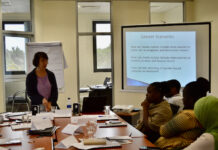
There is no excuse for online photo theft
Copying images from the web and using them to illustrate news articles without permission is a global problem. I’ve come across it in many countries where I have been delivering media training.
Some journalists seem to think that the word copyright means that they have the right to copy. It doesn’t, and there is a better way.
Sourcing pictures legally
The following system is legal and it will help you find excellent images that you are allowed to use. It will also help those whose work you want to reproduce.
The good news is that more and more photographers are making their images available for all to use under Creative Commons.
All you need to do is attribute the work to the photographer in the way they stipulate. The benefit is that you know that the images you use are legal, and the photographer gets a mention on your site, which helps them promote their work – everyone is a winner.
And it’s not only about finding images. If you use Creative Commons search you can look for any assets across a wide range of online resources.
Below is a screen grab from the Creative Commons Search site. You can search for a wide assortment of media assets and know that what you find is safe to use.
Be sure to check the box marked ‘modify or adapt’ because you will probably want to crop or size the image.

Another method – which is included in the Creative Commons search page – is to go direct to Flickr. Click on ‘Explore’ in the top navigation, then scroll down to ‘The Commons’ and then search for the item you want to use.

Or you can just go to Google, enter the search term, click on ‘tools’ in the top navigation, click on ‘labeled for reuse’, scroll down and click on one of the options. Then search for the image, take down the details of the creator and the terms under which it is being shared, download it and use it adding the necessary accreditation.

Ten sources of free images for journalists
The methods mentioned above are included in a helpful list of 10 sites where journalists can find free images. It’s been put together by the UK Press Gazette. The list includes not only sites where images are free to download and use under Creative Commons, but also stock-shot sites where thousands of free images are stored.
Creative Commons License
What you will now see is an assortment of pictures that you are legally entitled to use under the conditions set out in the Creative Commons license.
Click the image you want. When it loads, right click the image to see the sizes you can download and to check the type of Creative Commons license associated with the picture.
Select the size you want and then download it to your desktop. Read the conditions of the Creative Commons license carefully
Attribution and thanks
Copy the URL (web address) of the image and the name of the person who took the picture. You will need these later for attribution purposes.
If you have time, send a message to the person who took the picture thanking them for making it available under Creative Commons and telling them how you intend to use it. You don’t have to do this, but it’s a nice touch and, in my experience, always results in a friendly reply.
When you upload the image to the story make sure you add an attribution in the image alt and title tags. This is often called the description box in content management systems.
Doing this means that the attribution will be seen when people hover over the image with their mouse.
You should also make clear who took the picture in your article and link to their photostream (if they want that).
You can do this either in a caption, or in a note at the bottom of the article as I have done for the image used at the top of this piece (which was sourced using the method outlined above).
Note: This article is not suggesting journalists and bloggers ignore the many excellent photo agencies selling images. What it is suggesting is that if you can’t afford to pay for pictures it’s better to use legal, Creative Commons images rather than just downloading any image from the internet. Apologies to any photo journalists and agencies that might have taken offence.








